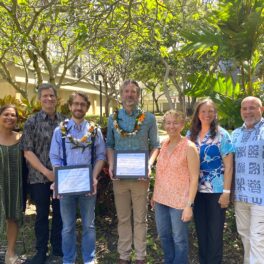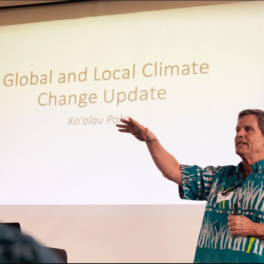Reptile skin grown in lab for first time, helps study endangered turtle disease
 Green sea turtles are listed as threatened or endangered. Image courtesy of Thierry Work, USGS.
Green sea turtles are listed as threatened or endangered. Image courtesy of Thierry Work, USGS.
Scientists, including Tina Weatherby, a research associate at the Pacific Biosciences Research Center (PBRC) published a study wherein they reconstructed the skin of endangered green turtles, marking the first time that skin of a reptile was successfully engineered in a laboratory. In turn, the scientists were able to grow a tumor-associated virus to better understand certain tumor diseases.
In an international collaboration led by the U.S. Geological Survey, scientists engineered turtle skin in order to grow a virus called chelonid herpesvirus 5, or ChHV5. ChHV5 is associated with fibropapillomatosis, known as FP, a tumor disease affecting green turtles worldwide but particularly those in Hawaiʻi, Florida and Brazil. FP in turtles causes disfiguring tumors on the skin, eyes and mouth as well as internal tumors. The virus also harms turtles’ immune systems, leading to secondary infections, emaciation and often death.
Examining how ChHV5 grows in turtle skin brings researchers closer to fighting viral diseases that threaten imperiled species. Although the existence of ChHV5 has been known for more than 20 years, the inability to grow the virus in the laboratory hampered understanding of how it causes tumors and the development of blood tests to detect the virus.
Read more about it in the UH System News and Big Island Now.



